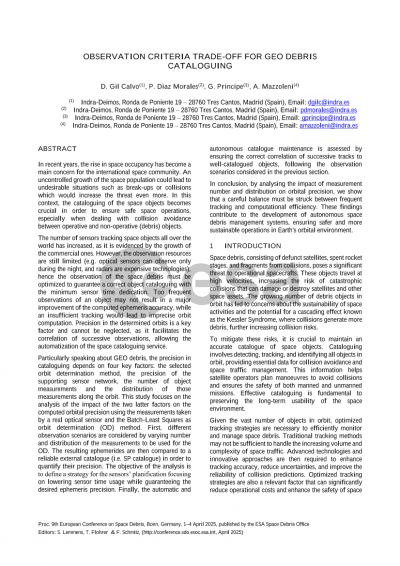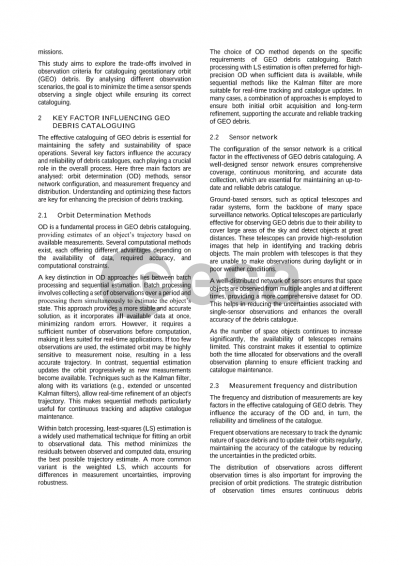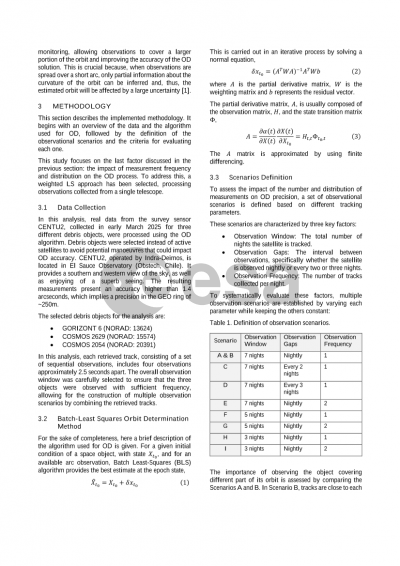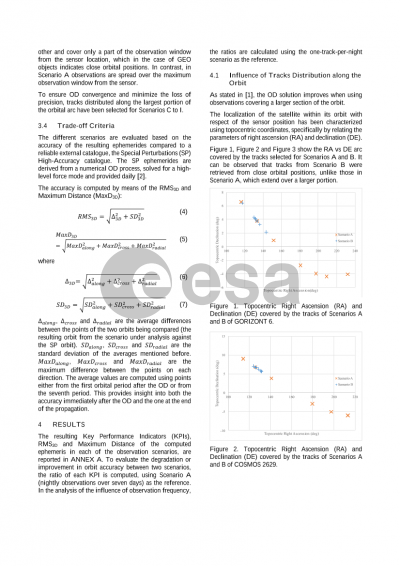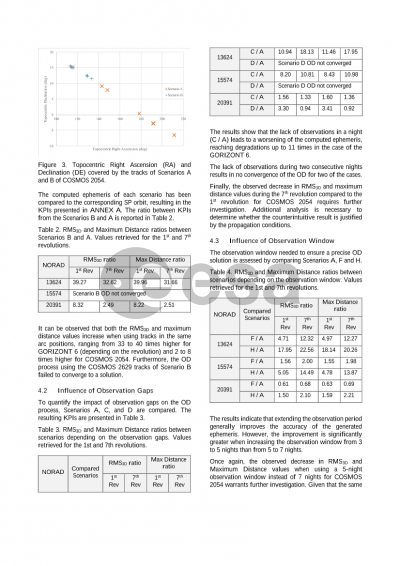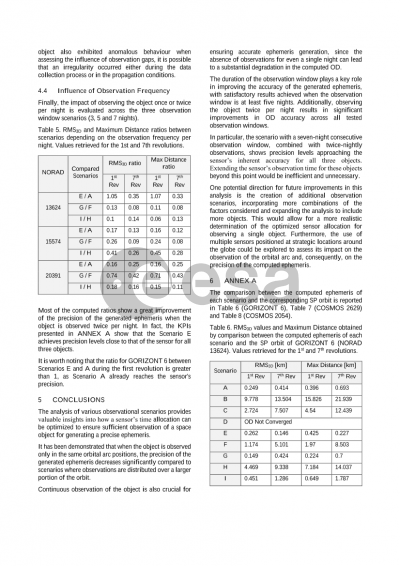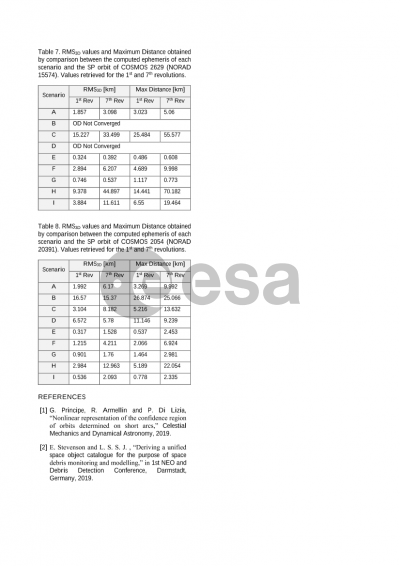Document details

Abstract
In recent years, the rise in space occupancy has become a main concern for the international space community. An uncontrolled growth of the space population could lead to undesirable situations such as break-ups or collisions which would increase the threat even more. In this context, the cataloguing of the space objects becomes crucial in order to ensure safe space operations, especially when dealing with collision avoidance between operative and non-operative (debris) objects.
The number of sensors tracking space objects all over the world has increased, as it is evidenced by the growth of the commercial ones. However, the observation resources are still limited (e.g. optical sensors can observe only during the night, and radars are expensive technologies), hence the observation of the space debris must be optimized to guarantee a correct object cataloguing with the minimum sensor time dedication. Too frequent observations of an object may not result in a major improvement of the computed ephemeris accuracy, while an insufficient tracking would lead to imprecise orbit computation. Precision in the determined orbits is a key factor and cannot be neglected, as it facilitates the correlation of successive observations, allowing the automatization of the space cataloguing service.
Particularly speaking about GEO debris, the precision in cataloguing depends on four key factors: the selected orbit determination method, the precision of the supporting sensor network, the number of object measurements and the distribution of those measurements along the orbit. This study focuses on the analysis of the impact of the two latter factors on the computed orbital precision using the measurements taken by a real optical sensor and the Batch-Least Squares as orbit determination (OD) method. First, different observation scenarios are considered by varying number and distribution of the measurements to be used for the OD. The resulting ephemerides are then compared to a reliable external catalogue (i.e. SP catalogue) in order to quantify their precision. The objective of the analysis is to define a strategy for the sensors’ planification focusing on lowering sensor time usage while guaranteeing the desired ephemeris precision. Finally, the automatic and autonomous catalogue maintenance is assessed by ensuring the correct correlation of successive tracks to well-catalogued objects, following the observation scenarios considered in the previous section.
In conclusion, by analysing the impact of measurement number and distribution on orbital precision, we show that a careful balance must be struck between frequent tracking and computational efficiency. These findings contribute to the development of autonomous space debris management systems, ensuring safer and more sustainable operations in Earth's orbital environment.
Preview
